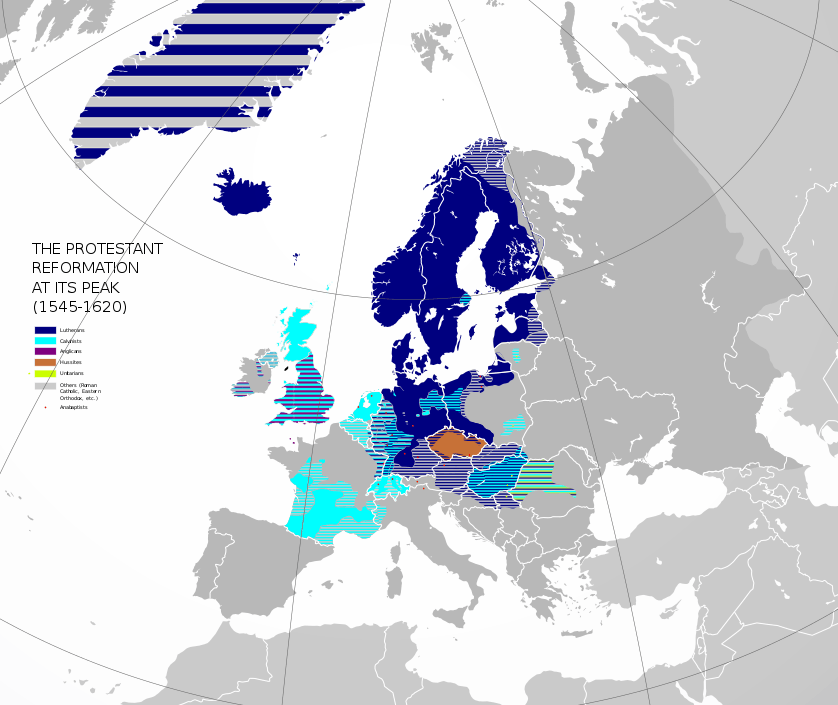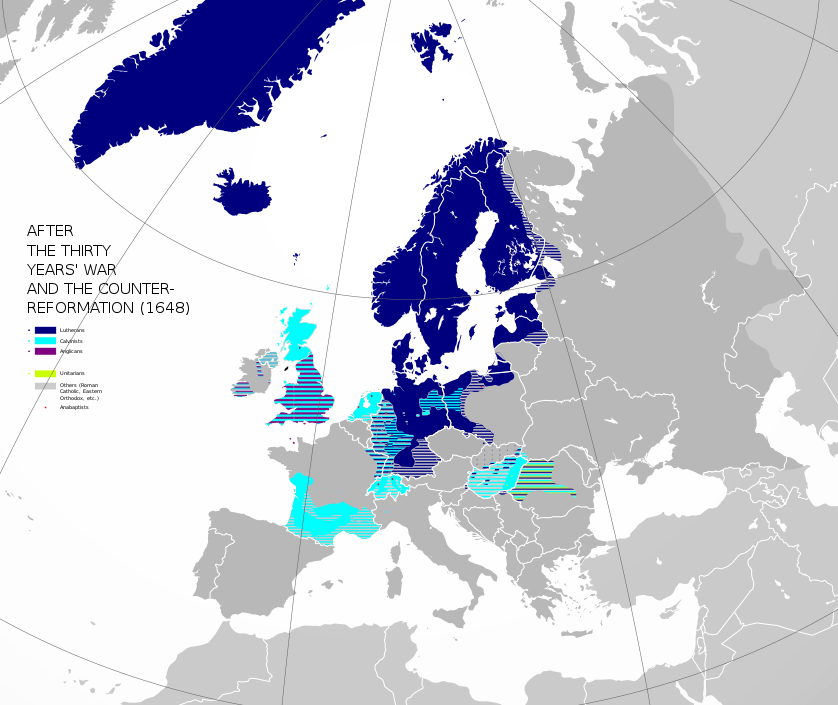Counter-Reformation
The Counter-Reformation (Latin: Contrareformatio), also called the Catholic Reformation (Latin: Reformatio Catholica) or the Catholic Revival,[1] was the period of Catholic resurgence that was initiated in response to the Protestant Reformation. It began with the Council of Trent (1545–63) and largely ended with the conclusion of the European wars of religion in 1648. Initiated to address the effects of the Protestant Reformation, the Counter-Reformation was a comprehensive effort composed of apologetic and polemical documents and ecclesiastical configuration as decreed by the Council of Trent. The last of these included the efforts of Imperial Diets of the Holy Roman Empire, exiling/forcibly converting Protestant populations, heresy trials and the Inquisition, anti-corruption efforts, spiritual movements, and the founding of new religious orders. Such policies had long-lasting effects in European history with exiles of Protestants continuing until the 1781 Patent of Toleration, although smaller expulsions took place in the 19th century.[2]
| Part of a series on the |
| Reformation |
|---|
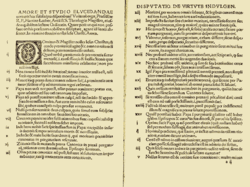 |
|
Contributing factors |
|
Theologies of seminal figures |
|
|
By location |
|
Major political leaders |
|
Counter-Reformation |
|
Art and literature Painting and sculpture
Building Literature Theater |
|
Music Forms
Liturgies
Hymnals
Secular Music |
|
Conclusion and commemorations Conclusion
Monuments Calendrical commemoration |
| Protestantism |
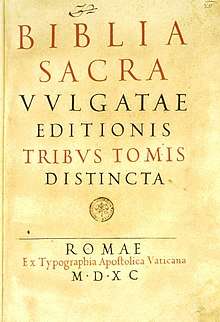
Such reforms included the foundation of seminaries for the proper training of priests in the spiritual life and the theological traditions of the Church, the reform of religious life by returning orders to their spiritual foundations, and new spiritual movements focusing on the devotional life and a personal relationship with Christ, including the Spanish mystics and the French school of spirituality.[3]
It also involved political activities that included the Spanish Inquisition and the expulsion or forcible conversion of hundreds of thousands of Protestants. A primary emphasis of the Counter-Reformation was a mission to reach parts of the world that had been colonized as predominantly Catholic and also try to reconvert areas such as Sweden and England that once were Catholic but had been lost to the Reformation.[3]
Various Counter-Reformation theologians focused only on defending doctrinal positions such as the sacraments and pious practices that were attacked by the Protestant reformers,[4] up to the Second Vatican Council in 1962–1965. One of the "most dramatic moments" at that council was the intervention of Belgian Bishop Émile-Joseph DeSmed when, during the debate on the nature of the church, he called for an end to the "triumphalism, clericalism, and legalism" that had typified the Church in the previous centuries.[5]
Key events of the period include: the Council of Trent (1545–63); the excommunication of Elizabeth I (1570) and the Battle of Lepanto (1571), both occurring during the pontificate of Pius V; the construction of the Gregorian observatory, the founding of the Gregorian University, the adoption of the Gregorian calendar, and the Jesuit China mission of Matteo Ricci under Pope Gregory XIII; the French Wars of Religion; the Long Turkish War and the execution of Giordano Bruno in 1600, under Pope Clement VIII; the birth of the Lyncean Academy of the Papal States, of which the main figure was Galileo Galilei (later put on trial); the final phases of the Thirty Years' War (1618–48) during the pontificates of Urban VIII and Innocent X; and the formation of the last Holy League by Innocent XI during the Great Turkish War.
Documents
Confutatio Augustana
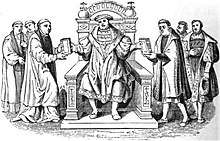
The 1530 Confutatio Augustana was the Catholic response to the Augsburg Confession.
Council of Trent
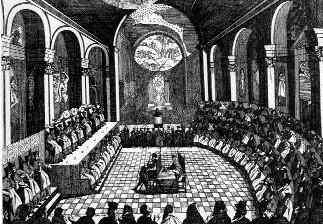
Pope Paul III (1534–49) is considered the first pope of the Counter-Reformation,[3] and he also initiated the Council of Trent (1545–63), tasked with institutional reform, addressing contentious issues such as corrupt bishops and priests, the sale of indulgences, and other financial abuses.
The council upheld the basic structure of the medieval church, its sacramental system, religious orders, and doctrine, and declined to update the ritual of the Mass since historical studies of the Mass were lacking at the time.[6]
It rejected all compromise with Protestants, restating basic tenets of the Catholic Faith. The council upheld salvation appropriated by grace through faith and works of that faith (not just by faith, as the Protestants insisted) because "faith without works is dead", as the Epistle of James states (2:22–26).
Transubstantiation, according to which the consecrated bread and wine are held to have been transformed really and substantially into the body, blood, soul and divinity of Christ, was also reaffirmed, as were the traditional seven sacraments of the Catholic Church. Other practices that drew the ire of Protestant reformers, such as pilgrimages, the veneration of saints and relics, the use of venerable images and statuary, and the veneration of the Virgin Mary were strongly reaffirmed as spiritually commendable practices.
The council, in the Canon of Trent, officially accepted the Vulgate listing of the Old Testament Bible, which included the deuterocanonical works (called apocrypha by Protestants) on a par with the 39 books found in the Masoretic Text. This reaffirmed the previous Council of Rome and Synods of Carthage (both held in the 4th century AD), which had affirmed the Deuterocanon as scripture.[7] The council also commissioned the Roman Catechism, which served as authoritative Church teaching until the Catechism of the Catholic Church (1992).
While the traditional fundamentals of the Church were reaffirmed, there were noticeable changes to answer complaints that the Counter-Reformers were, tacitly, willing to admit were legitimate. Among the conditions to be corrected by Catholic reformers was the growing divide between the clerics and the laity; many members of the clergy in the rural parishes had been poorly educated. Often, these rural priests did not know Latin and lacked opportunities for proper theological training. Addressing the education of priests had been a fundamental focus of the humanist reformers in the past.
Parish priests were to be better educated in matters of theology and apologetics, while Papal authorities sought to educate the faithful about the meaning, nature and value of art and liturgy, particularly in monastic churches (Protestants had criticised them as "distracting"). Notebooks and handbooks became more common, describing how to be good priests and confessors.
Thus, the Council of Trent attempted to improve the discipline and administration of the Church. The worldly excesses of the secular Renaissance Church, epitomized by the era of Alexander VI (1492–1503), intensified during the Reformation under Pope Leo X (1513–21), whose campaign to raise funds for the construction of Saint Peter's Basilica by supporting use of indulgences served as a key impetus for Martin Luther's 95 Theses. The Catholic Church responded to these problems by a vigorous campaign of reform, inspired by earlier Catholic reform movements that predated the Council of Constance (1414–17): humanism, devotionalism, legalism and the observantine tradition.
The council, by virtue of its actions, repudiated the pluralism of the secular Renaissance that had previously plagued the Church: the organization of religious institutions was tightened, discipline was improved, and the parish was emphasized. The appointment of bishops for political reasons was no longer tolerated. In the past, the large landholdings forced many bishops to be "absent bishops" who at times were property managers trained in administration. Thus, the Council of Trent combated "absenteeism", which was the practice of bishops living in Rome or on landed estates rather than in their dioceses. The Council of Trent gave bishops greater power to supervise all aspects of religious life. Zealous prelates, such as Milan's Archbishop Carlo Borromeo (1538–84), later canonized as a saint, set an example by visiting the remotest parishes and instilling high standards.
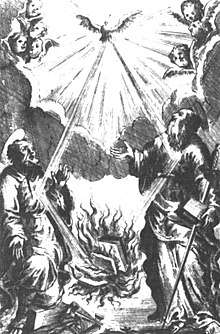
Index Librorum Prohibitorum
The 1559–1967 Index Librorum Prohibitorum was a directory of prohibited books which was updated twenty times during the next four centuries as books were added or removed from the list by the Sacred Congregation of the Index. It was divided into three classes. The first class listed heretical writers, the second class listed heretical works, and the third class listed forbidden writings which were published without the name of the author. The Index was finally suspended on 29 March 1967.
Roman Catechism
The 1566 Roman Catechism was an attempt to educate the clergy.
Nova ordinantia ecclesiastica
The 1575 Nova ordinantia ecclesiastica was an addendum to the Liturgia Svecanæ Ecclesiæ catholicæ & orthodoxæ conformia, also called the "Red Book".[8] This launched the Liturgical Struggle, which pitted John III of Sweden against his younger brother Charles. During this time, Jesuit Laurentius Nicolai came to lead the Collegium regium Stockholmense. This theatre of the Counter-Reformation was called the Missio Suetica.
Defensio Tridentinæ fidei
The 1578 Defensio Tridentinæ fidei was the Catholic response to the Examination of the Council of Trent.
Unigenitus
The 1713 papal bull Unigenitus condemned 101 propositions of the French Jansenist theologian Pasquier Quesnel (1634–1719). Jansenism was a Protestant-leaning or mediating movement within Catholicism that was criticized for being Crypto-Protestant. After Jansenism was condemned it led to the development of the Old Catholic Church of the Netherlands.
Politics
British isles
The Netherlands
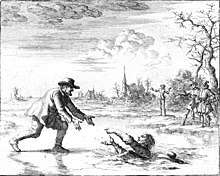
When the Calvinists took control of various parts of the Netherlands in the Dutch Revolt, the Catholics led by Philip II of Spain fought back. The king sent in Alexander Farnese as Governor-General of the Spanish Netherlands from 1578 to 1592.
Farnese led a successful campaign 1578–1592 against the Dutch Revolt, in which he captured the main cities in the south Spanish – Belgium and returned them to the control of Catholic Spain.[9] He took advantage of the divisions in the ranks of his opponents between the Dutch-speaking Flemish and the French-speaking Walloons, using persuasion to take advantage of the divisions and foment the growing discord. By doing so he was able to bring back the Walloon provinces to an allegiance to the king. By the treaty of Arras in 1579, he secured the support of the 'Malcontents', as the Catholic nobles of the south were styled.
The seven northern provinces as well as Flanders and Brabant, controlled by Calvinists, responded with the Union of Utrecht, where they resolved to stick together to fight Spain. Farnese secured his base in Hainaut and Artois, then moved against Brabant and Flanders. City after city fell: Tournai, Maastricht, Breda, Bruges and Ghent opened their gates.
Farnese finally laid siege to the great seaport of Antwerp. The town was open to the sea, strongly fortified, and well defended under the leadership of Marnix van St. Aldegonde. Farnese cut off all access to the sea by constructing a bridge of boats across the Scheldt. The city surrendered in 1585 as 60,000 Antwerp citizens (60 per cent of the pre-siege population) fled north. All of the southern Netherlands was once more under Spanish control.
In a war composed mostly of sieges rather than battles, he proved his mettle. His strategy was to offer generous terms for surrender: there would be no massacres or looting; historic urban privileges were retained; there was a full pardon and amnesty; return to the Catholic Church would be gradual.[10]
Meanwhile, Catholic refugees from the North regrouped in Cologne and Douai and developed a more militant, Tridentine identity. They became the mobilizing forces of a popular Counter-Reformation in the South, thereby facilitating the eventual emergence of the state of Belgium.[11]
Germany
The Augsburg Interim was a period where Counter-Reformation measures were exacted upon defeated Protestant populations following the Schmalkaldic War.
During the centuries of Counter Reformation, new towns, collectively termed Exulantenstadt, were founded especially as homes for refugees fleeing the Counter-Reformation. Supporters of the Unity of the Brethren settled in parts of Silesia and Poland. Protestants from Flanders, Belgium often fled to the Lower Rhine region and northern Germany. French Huguenots crossed the Rhineland to Central Germany. Most towns were named either after the ruler who established them or as expressions of gratitude, e.g. Freudenstadt ("Joy Town"), Glückstadt ("Happy Town").[12]
A list of Exulantenstädte:
Cologne
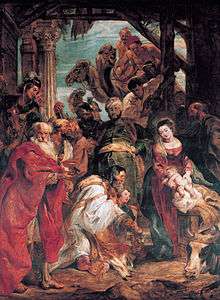
The Cologne War (1583–89) was a conflict between Protestant and Catholic factions that devastated the Electorate of Cologne. After Gebhard Truchsess von Waldburg, the archbishop ruling the area, converted to Protestantism, Catholics elected another archbishop, Ernst of Bavaria, and successfully defeated Gebhard and his allies.
Belgium
Bohemia and Austria
In the Habsburg hereditary lands, which had become predominantly Protestant except for Tyrol, the Counter-Reformation began with Emperor Rudolf II, who began suppressing Protestant activity in 1576. This conflict escalated into the Bohemian Revolt of 1620. Defeated, the Protestant nobility and clergy of Bohemia and Austria were expelled from the country or forced to convert to Catholicism. Among these exiles were important German poets such as Sigmund von Birken, Catharina Regina von Greiffenberg, and Johann Wilhelm von Stubenberg. This influenced the development of German Baroque literature, especially around Regensburg and Nuremberg. Some lived as crypto-Protestants.
Others moved to Saxony or the Margraviate of Brandenburg. The Salzburg Protestants were exiled in the 18th century, especially to Prussia. The Transylvanian Landlers were deported to the eastern part of the Habsburg domain. As heir to the throne, Joseph II spoke vehemently to his mother, Maria Theresa, in 1777 against the expulsion of Protestants from Moravia, calling her choices "unjust, impious, impossible, harmful and ridiculous."[13] His 1781 Patent of Toleration can be regarded as the end of the political Counter-Reformation, although there were still smaller expulsions against Protestants (such as the Zillertal expulsion). In 1966, Archbishop Andreas Rohracher expressed regret about the expulsions.
France
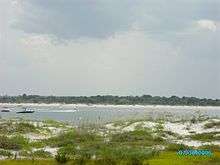
Huguenots (French Reformed Protestants) fought a series of wars in France with Catholics, resulting in millions of deaths and the Edict of Fontainebleau in 1685 which revoked their freedom of religion. In 1565, several hundred Huguenot shipwreck survivors surrendered to the Spanish in Florida, believing they would be treated well. Although a Catholic minority in their party was spared, all of the rest were executed for heresy, with active clerical participation.[14]
Italy
Poland and Lithuania
Spain
Eastern Rites
Middle East
Ukraine
The effects of the Council of Trent and the counter-reformation also paved the way for Ruthenian Orthodox Christians to return to full communion with the Catholic Church while preserving their Byzantine tradition. Pope Clement VIII received the Ruthenian bishops into full communion on February 7, 1596.[15] Under the Treaty of the Union of Brest, Rome recognized the Ruthenians' continued practice of Byzantine liturgical tradition, married clergy, and consecration of bishops from within the Ruthenian Christian tradition. Moreover, the treaty specifically exempts Ruthenians from accepting the Filioque clause and Purgatory as a condition for reconciliation.[16]
Areas affected
The Counter-Reformation succeeded in diminishing Protestantism in Poland, France, Italy, Ireland, and the vast lands controlled by the Habsburgs including Austria, southern Germany, Bohemia (now the Czech Republic), the Spanish Netherlands (now Belgium), Croatia, and Slovenia. Noticeably, it failed to succeed completely in Hungary, where a sizeable Protestant minority remains to this day, though Catholics still are the largest Christian denomination.
Spiritual movements
Precursors
The 14th, 15th, and 16th centuries saw a spiritual revival in Europe, in which the question of salvation became central. This became known as the Catholic Reformation. Several theologians harkened back to the early days of Christianity and questioned their spirituality. Their debates expanded across most of the Western Europe in the 15th and 16th centuries, whilst secular critics also examined religious practice, clerical behavior and the church's doctrinal positions. Several varied currents of thought were active, but the ideas of reform and renewal were led by the clergy.
The reforms decreed at Fifth Council of the Lateran (1512–1517) had only a small effect. Some doctrinal positions got further from the Church's official positions, leading to the break with Rome and the formation of Protestant denominations. Even so, conservative and reforming parties still survived within the Catholic Church even as the Protestant Reformation spread. Protestants decisively broke from the Catholic Church in the 1520s. The two distinct dogmatic positions within the Catholic Church solidified in the 1560s. The Catholic Reformation became known as the Counter-Reformation, defined as a reaction to Protestantism rather than as a reform movement. The historian Henri Daniel-Rops wrote:
The term, however, though common, is misleading: it cannot rightly be applied, logically or chronologically, to that sudden awakening as of a startled giant, that wonderful effort of rejuvenation and reorganization, which in a space of thirty years gave to the Church an altogether new appearance. ... The so-called 'counter-reformation' did not begin with the Council of Trent, long after Luther; its origins and initial achievements were much anterior to the fame of Wittenberg. It was undertaken, not by way of answering the 'reformers,' but in obedience to demands and principles that are part of the unalterable tradition of the Church and proceed from her most fundamental loyalties.[17]
The regular orders made their first attempts at reform in the 14th century. The 'Benedictine Bull' of 1336 reformed the Benedictines and Cistercians. In 1523, the Camaldolese Hermits of Monte Corona were recognized as a separate congregation of monks. In 1435, Francis of Paola founded the Poor Hermits of Saint Francis of Assisi, who became the Minim Friars. In 1526, Matteo de Bascio suggested reforming the Franciscan rule of life to its original purity, giving birth to the Capuchins, recognized by the pope in 1619.[18] This order was well known to the laity and played an important role in public preaching. To respond to the new needs of evangelism, clergy formed into religious congregations, taking special vows but with no obligation to assist in a monastery's religious offices. These regular clergy taught, preached and took confession but were under a bishop's direct authority and not linked to a specific parish or area like a vicar or canon.[18]
In Italy, the first congregation of regular clergy was the Theatines founded in 1524 by Gaetano and Cardinal Gian Caraffa. This was followed by the Somaschi Fathers in 1528, the Barnabites in 1530, the Ursulines in 1535, the Jesuits, canonically recognised in 1540, the Clerics Regular of the Mother of God of Lucca in 1583, the Camillians in 1584, the Adorno Fathers in 1588, and finally the Piarists in 1621. In 1524, a number of priests in Rome began to live in a community centred on Philip Neri. The Oratorians were given their constitutions in 1564 and recognized as an order by the pope in 1575. They used music and singing to attract the faithful.[19]
Religious orders
New religious orders were a fundamental part of the reforms. Orders such as the Capuchins, Discalced Carmelites, Discalced Augustinians, Augustinian Recollects, Cistercian Feuillants, Ursulines, Theatines, Barnabites, Congregation of the Oratory of Saint Philip Neri, and especially Jesuits worked in rural parishes and set examples of Catholic renewal.
The Theatines undertook checking the spread of heresy and contributed to a regeneration of the clergy. The Capuchins, an offshoot of the Franciscan order notable for their preaching and for their care for the poor and the sick, grew rapidly. Capuchin-founded confraternities took special interest in the poor and lived austerely. Members of orders active in overseas missionary expansion expressed the view that the rural parishes often needed Christianizing as much as the heathens of Asia and the Americas.
The Ursulines focused on the special task of educating girls,[20] the first order of women to be dedicated to that goal.[21] Devotion to the traditional works of mercy exemplified the Catholic Reformation's reaffirmation of the importance of both faith and works and salvation through God's grace and repudiation of the maxim sola scriptura emphasized by Protestants sects. Not only did they make the Church more effective, but they also reaffirmed fundamental premises of the medieval Church.
The Jesuits were the most effective of the new Catholic orders. An heir to the devotional, observantine, and legalist traditions, the Jesuits organized along military lines. The worldliness of the Renaissance Church had no part in their new order. Loyola's masterwork Spiritual Exercises showed the emphasis of handbooks characteristic of Catholic reformers before the Reformation, reminiscent of devotionalism. The Jesuits became preachers, confessors to monarchs and princes, and humanist educators.[22]
According to the Adventist minister Le Roy Froom, Jesuits such as Francisco Ribera and Luis De Alcasar were forced to justify their position by the unflattering prophetic interpretations and epithets used by Protestant Bible scholars concerning the papacy. He argued that these Jesuits used two counter-interpretations of those same prophecies, Futurism and Preterism. These were devised to deflect the Protestant Reformation teachings and to shift the use of the Antichrist and analogous prophecies away from the pope and out of the Middle Ages. It is said that Froom argued these methods left an enduring mark upon history.[22] Their efforts are largely credited with stemming Protestantism in Poland, Bohemia, Hungary, southern Germany, France, and the Spanish Netherlands. Froom said,
In Germany, Switzerland, France, Denmark, Sweden, England, and Scotland there had been simultaneous and impressive declarations by voice and pen that the Papacy was the specified Antichrist of prophecy. The symbols of Daniel, Paul, and John were applied with tremendous effect. Hundreds of books and tracts impressed their contention upon the consciousness of Europe. Indeed, it gained so great a hold upon the minds of men that Rome, in alarm, saw that she must successfully counteract this identification of Antichrist with the Papacy, or lose the battle.[23]
Jesuits participated in the expansion of the Church in the Americas and Asia, by their missionary activity. Loyola's biography contributed to an emphasis on popular piety that had waned under political popes such as Alexander VI and Leo X. After recovering from a serious wound, he took a vow to "serve only God and the Roman pontiff, His vicar on Earth." The emphasis on the Pope is a reaffirmation of the medieval papalism, while the Council of Trent defeated conciliarism, the belief that general councils of the Church collectively were God's representative on Earth rather than the Pope. Taking the Pope as an absolute leader, the Jesuits contributed to the Counter-Reformation Church along a line harmonized with Rome.
Devotion and mysticism
| The Battle of Lepanto | |
|---|---|
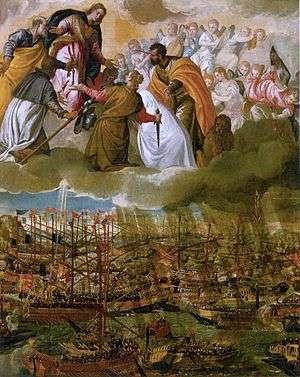 | |
| Artist | Paolo Veronese |
| Year | 1571 |
| Medium | Oil on canvas |
| Dimensions | 169 cm × 137 cm (67 in × 54 in) |
| Location | Gallerie dell'Accademia, Venice, Italy |
The Catholic Reformation was not only a political and Church policy oriented movement, but it also included major figures such as Ignatius of Loyola, Teresa of Ávila, John of the Cross, Francis de Sales, and Philip Neri, who added to the spirituality of the Catholic Church. Teresa of Avila and John of the Cross were Spanish mystics and reformers of the Carmelite Order, whose ministry focused on interior conversion to Christ, the deepening of prayer, and commitment to God's will. Teresa was given the task of developing and writing about the way to perfection in her love and unity with Christ. Thomas Merton called John of the Cross the greatest of all mystical theologians.[24]
The spirituality of Filippo Neri, who lived in Rome at the same time as Ignatius, was practically oriented, too, but totally opposed to the Jesuit approach. Said Filippo, "If I have a real problem, I contemplate what Ignatius would do ... and then I do the exact opposite". As a recognition of their joint contribution to the spiritual renewal within the Catholic reformation, Ignatius of Loyola, Filippo Neri, and Teresa of Ávila were canonized on the same day, March 12, 1622.
The Virgin Mary played an increasingly central role in Catholic devotions. The victory at the Battle of Lepanto in 1571 was accredited to the Virgin Mary and signified the beginning of a strong resurgence of Marian devotions.[25] During and after the Catholic Reformation, Marian piety experienced unforeseen growth with over 500 pages of mariological writings during the 17th century alone.[26] The Jesuit Francisco Suárez was the first theologian to use the Thomist method on Marian theology. Other well-known contributors to Marian spirituality are Lawrence of Brindisi, Robert Bellarmine, and Francis of Sales.
The sacrament of penance was transformed from a social to a personal experience; that is, from a public community act to a private confession. It now took place in private in a confessional. It was a change in its emphasis from reconciliation with the Church to reconciliation directly with God and from emphasis on social sins of hostility to private sins (called "the secret sins of the heart").[27]
Baroque art
The Catholic Church was a leading arts patron across much of Europe. The goal of much art in the Counter-Reformation, especially in the Rome of Bernini and the Flanders of Peter Paul Rubens, was to restore Catholicism's predominance and centrality. This was one of the drivers of the Baroque style that emerged across Europe in the late sixteenth century. In areas where Catholicism predominated, architecture[28] and painting,[29] and to a lesser extent music, reflected Counter-Reformation goals.[30]
The Council of Trent proclaimed that architecture, painting and sculpture had a role in conveying Catholic theology. Any work that might arouse "carnal desire" was inadmissible in churches, while any depiction of Christ's suffering and explicit agony was desirable and proper. In an era when some Protestant reformers were destroying images of saints and whitewashing walls, Catholic reformers reaffirmed the importance of art, with special encouragement given to images of the Virgin Mary.[31]
Decrees on art
| The Last Judgment | |
|---|---|
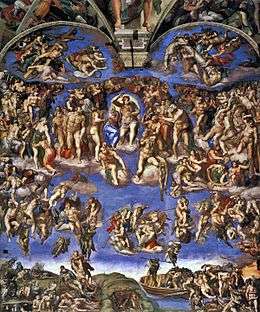 | |
| Artist | Michelangelo |
| Year | 1537–1541 |
| Type | Fresco |
| Dimensions | 1370 cm × 1200 cm (539.3 in × 472.4 in) |
| Location | Sistine Chapel, Vatican City |
The Last Judgment, a fresco in the Sistine Chapel by Michelangelo (1534–1541), came under persistent attack in the Counter-Reformation for, among other things, nudity (later painted over for several centuries), not showing Christ seated or bearded, and including the pagan figure of Charon. Italian painting after 1520, with the notable exception of the art of Venice, developed into Mannerism, a highly sophisticated style striving for effect, that concerned many Churchmen as lacking appeal for the mass of the population. Church pressure to restrain religious imagery affected art from the 1530s and resulted in the decrees of the final session of the Council of Trent in 1563 including short and rather inexplicit passages concerning religious images, which were to have great impact on the development of Catholic art. Previous Catholic councils had rarely felt the need to pronounce on these matters, unlike Orthodox ones which have often ruled on specific types of images.
The decree confirmed the traditional doctrine that images only represented the person depicted, and that veneration to them was paid to the person, not the image, and further instructed that:
... every superstition shall be removed ... all lasciviousness be avoided; in such wise that figures shall not be painted or adorned with a beauty exciting to lust ... there be nothing seen that is disorderly, or that is unbecomingly or confusedly arranged, nothing that is profane, nothing indecorous, seeing that holiness becometh the house of God. And that these things may be the more faithfully observed, the holy Synod ordains, that no one be allowed to place, or cause to be placed, any unusual image, in any place, or church, howsoever exempted, except that image have been approved of by the bishop ...[32]
Ten years after the decree Paolo Veronese was summoned by the Holy Office to explain why his Last Supper, a huge canvas for the refectory of a monastery, contained, in the words of the Holy Office: "buffoons, drunken Germans, dwarfs and other such scurrilities" as well as extravagant costumes and settings, in what is indeed a fantasy version of a Venetian patrician feast.[33] Veronese was told that he must change his painting within a three-month period. He just changed the title to The Feast in the House of Levi, still an episode from the Gospels, but a less doctrinally central one, and no more was said.[34]
The number of such decorative treatments of religious subjects declined sharply, as did "unbecomingly or confusedly arranged" Mannerist pieces, as a number of books, notably by the Flemish theologian Molanus, Charles Borromeo and Cardinal Gabriele Paleotti, and instructions by local bishops, amplified the decrees, often going into minute detail on what was acceptable. Much traditional iconography considered without adequate scriptural foundation was in effect prohibited, as was any inclusion of classical pagan elements in religious art, and almost all nudity, including that of the infant Jesus.[35]
According to the great medievalist Émile Mâle, this was "the death of medieval art",[36] but it paled in contrast to the Iconclasm present in some Protestant circles and did not apply to secular paintings. Some Counter Reformation painters and sculptors include Titian, Tintoretto, Federico Barocci, Scipione Pulzone, El Greco, Peter Paul Rubens, Guido Reni, Anthony van Dyck, Bernini, Zurbarán, Rembrandt and Bartolomé Esteban Murillo.
Church music
Reforms before the Council of Trent
The Council of Trent is believed to be the apex of the Counter-Reformation's influence on Church music in the 16th century. However, the council's pronouncements on music were not the first attempt at reform. The Catholic Church had spoken out against a perceived abuse of music used in the Mass before the Council of Trent ever convened to discuss music in 1562. The manipulation of the Creed and using non-liturgical songs was addressed in 1503, and secular singing and the intelligibility of the text in the delivery of psalmody in 1492.[37] The delegates at the council were just a link in the long chain of Church clergy who had pushed for a reform of the musical liturgy reaching back as far as 1322.[38]
Probably the most extreme move at reform came late in 1562 when, instructed by the legates, Egidio Foscarari (bishop of Modena) and Gabriele Paleotti (archbishop of Bologna) began work on reforming religious orders and their practices involving the liturgy.[39] The reforms prescribed to the cloisters of nuns, which included omitting the use of an organ, prohibiting professional musicians, and banishing polyphonic singing, were much more strict than any of the council's edicts or even those to be found in the Palestrina legend.[40]
Fueling the cry for reform from many ecclesial figures was the compositional technique popular in the 15th and 16th centuries of using musical material and even the accompanying texts from other compositions such as motets, madrigals, and chansons. Several voices singing different texts in different languages made any of the text difficult to distinguish from the mixture of words and notes. The parody mass would then contain melodies (usually the tenor line) and words from songs that could have been, and often were, on sensual subjects.[41] The musical liturgy of the Church was being more and more influenced by secular tunes and styles. The Council of Paris, which met in 1528, as well as the Council of Trent were making attempts to restore the sense of sacredness to the Church setting and what was appropriate for the Mass. The councils were simply responding to issues of their day.[42]
Reforms during the 22nd session
The Council of Trent met sporadically from December 13, 1545, to December 4, 1563, to reform many parts of the Catholic Church. The 22nd session of the council, which met in 1562, dealt with Church music in Canon 8 in the section of "Abuses in the Sacrifice of the Mass" during a meeting of the council on September 10, 1562.[43]
Canon 8 states that "Since the sacred mysteries should be celebrated with utmost reverence, with both deepest feeling toward God alone, and with external worship that is truly suitable and becoming, so that others may be filled with devotion and called to religion: ... Everything should be regulated so that the Masses, whether they be celebrated with the plain voice or in song, with everything clearly and quickly executed, may reach the ears of the hearers and quietly penetrate their hearts. In those Masses where measured music and organ are customary, nothing profane should be intermingled, but only hymns and divine praises. If something from the divine service is sung with the organ while the service proceeds, let if first be recited in a simple, clear voice, lest the reading of the sacred words be imperceptible. But the entire manner of singing in musical modes should be calculated not to afford vain delight to the ear, but so that the words may be comprehensible to all; and thus may the hearts of the listeners be caught up into the desire for celestial harmonies and contemplation of the joys of the blessed."[44]
Canon 8 is often quoted as the Council of Trent's decree on Church music, but that is a glaring misunderstanding of the canon; it was only a proposed decree. In fact, the delegates at the council never officially accepted canon 8 in its popular form but bishops of Granada, Coimbra, and Segovia pushed for the long statement about music to be attenuated and many other prelates of the council joined enthusiastically.[45] The only restrictions actually given by the 22nd session was to keep secular elements out of the music, making polyphony implicitly allowed.[46] The issue of textual intelligibility did not make its way into the final edicts of the 22nd session but were only featured in preliminary debates.[47] The 22nd session only prohibited "lascivious" and "profane" things to be intermingled with the music but Paleotti, in his Acts, brings to equal importance the issues of intelligibility.[48]
The idea that the council called to remove all polyphony from the Church is widespread, but there is no documentary evidence to support that claim. It is possible, however, that some of the Fathers had proposed such a measure.[49] The emperor Ferdinand I, Holy Roman Emperor has been attributed to be the "saviour of Church music" because he said polyphony ought not to be driven out of the Church. But Ferdinand was most likely an alarmist and read into the council the possibility of a total ban on polyphony.[50] The Council of Trent did not focus on the style of music but on attitudes of worship and reverence during the Mass.[51]
Saviour-Legend
The crises regarding polyphony and intelligibility of the text and the threat that polyphony was to be removed completely, which was assumed to be coming from the council, has a very dramatic legend of resolution. The legend goes that Giovanni Pierluigi da Palestrina (c. 1525/26–1594), a Church musician and choirmaster in Rome, wrote a Mass for the council delegates in order to demonstrate that a polyphonic composition could set the text in such a way that the words could be clearly understood and that was still pleasing to the ear. Palestrina's Missa Papae Marcelli (Mass for Pope Marcellus) was performed before the council and received such a welcoming reception among the delegates that they completely changed their minds and allowed polyphony to stay in use in the musical liturgy. Therefore, Palestrina came to be named the "saviour of Church polyphony". This legend, though unfounded, has long been a mainstay of histories of music.[52] The saviour-myth was first spread by an account by Aggazzari and Banchieri in 1609 who said that Pope Marcellus was trying to replace all polyphony with plainsong.[53] Palestrina's "Missa Papae Marcelli" was, though, in 1564, after the 22nd session, performed for the Pope while reforms were being considered for the Sistine Choir.
The Pope Marcellus Mass, in short, was not important in its own day and did not help save Church polyphony.[54] What is undeniable is that despite any solid evidence of his influence during or after the Council of Trent, no figure is more qualified to represent the cause of polyphony in the Mass than Palestrina.[55] Pope Pius IV upon hearing Palestrina's music would make Palestrina, by Papal Brief, the model for future generations of Catholic composers of sacred music.[56]
Reforms following the Council of Trent
.jpg)
Like his contemporary Palestrina, the Flemish composer Jacobus de Kerle (1531/32–1591) was also credited with giving a model of composition for the Council of Trent. His composition in four-parts, Preces, marks the "official turning point of the Counter Reformation's a cappella ideal."[57] Kerle was the only ranking composer of the Netherlands to have acted in conformity with the council.[58] Another musical giant on equal standing with Palestrina, Orlando di Lasso (1530/32–1594) was an important figure in music history though less of a purist than Palestrina.[59] He expressed sympathy for the council's concerns but still showed favor for the "Parady chanson Masses."[60]
Despite the dearth of edicts from the council regarding polyphony and textual clarity, the reforms that followed from the 22nd session filled in the gaps left by the council in stylistic areas. In the 24th session the council gave authority to "Provincial Synods" to discern provisions for Church music.[61] The decision to leave practical application and stylistic matters to local ecclesiastical leaders was important in shaping the future of Catholic church music.[62] It was left then up to the local Church leaders and Church musicians to find proper application for the council's decrees.[63]
Though originally theological and directed towards the attitudes of the musicians, the Council's decrees came to be thought of by Church musicians as a pronouncement on proper musical styles.[64] This understanding was most likely spread through musicians who sought to implement the council's declarations but did not read the official Tridentine pronouncements. Church musicians were probably influenced by order from their ecclesiastical patrons.[65] Composers who reference the council's reforms in prefaces to their compositions do not adequately claim a musical basis from the council but a spiritual and religious basis of their art.[66]
The Cardinal Archbishop of Milan, Charles Borromeo, was a very important figure in reforming Church music after the Council of Trent. Though Borromeo was an aide to the pope in Rome and was unable to be in Milan, he eagerly pushed for the decrees of the council to be quickly put into practice in Milan.[67] Borromeo kept in contact with his church in Milian through letters and eagerly encouraged the leaders there to implement the reforms coming from the Council of Trent. In one of his letters to his vicar in the Milan diocese, Nicolo Ormaneto of Verona, Borromeo commissioned the master of the chapel, Vincenzo Ruffo (1508–1587), to write a Mass that would make the words as easy to understand as possible. Borromeo also suggested that if Don Nicola, a composer of a more chromatic style, was in Milan he too could compose a Mass and the two be compared for textural clarity.[68] Borromeo was likely involved or heard of the questions regarding textual clarity because of his request to Ruffo.
Ruffo took Borromeo's commission seriously and set out to compose in a style that presented the text so that all words would be intelligible and the textual meaning be the most important part of the composition. His approach was to move all the voices in a homorhythmic manner with no complicated rhythms, and to use dissonance very conservatively. Ruffo's approach was certainly a success for textual clarity and simplicity, but if his music was very theoretically pure it was not an artistic success despite Ruffo's attempts to bring interest to the monotonous four-part texture.[69] Ruffo's compositional style which favored the text was well in line with the council's perceived concern with intelligibility. Thus the belief in the council's strong edicts regarding textual intelligibility became to characterize the development of sacred Church music.
The Council of Trent brought about other changes in music: most notably developing the Missa brevis, Lauda and "Spiritual Madrigal" (Madrigali Spirituali). Additionally, the numerous sequences were mostly prohibited in the 1570 Missal of Pius V. The remaining sequences were Victimae paschali laudes for Easter, Veni Sancte Spiritus for Pentecost, Lauda Sion Salvatorem for Corpus Christi, and Dies Irae for All Souls and for Masses for the Dead.
Another reform following the Council of Trent was the publication of the 1568 Roman Breviary.
Calendrical studies
More celebrations of holidays and similar events raised a need to have these events followed closely throughout the dioceses. But there was a problem with the accuracy of the calendar: by the sixteenth century the Julian calendar was almost ten days out of step with the seasons and the heavenly bodies. Among the astronomers who were asked to work on the problem of how the calendar could be reformed was Nicolaus Copernicus, a canon at Frombork (Frauenburg). In the dedication to De revolutionibus orbium coelestium (1543), Copernicus mentioned the reform of the calendar proposed by the Fifth Council of the Lateran (1512–1517). As he explains, a proper measurement of the length of the year was a necessary foundation to calendar reform. By implication, his work replacing the Ptolemaic system with a heliocentric model was prompted in part by the need for calendar reform.
An actual new calendar had to wait until the Gregorian calendar in 1582. At the time of its publication, De revolutionibus passed with relatively little comment: little more than a mathematical convenience that simplified astronomical references for a more accurate calendar.[70] Physical evidence suggesting Copernicus's theory regarding the earth's motion was literally true promoted the apparent heresy against the religious thought of the time. As a result, during the Galileo affair, Galileo Galilei was placed under house arrest, served in Rome, Siena, Arcetri, and Florence, for publishing writings said to be "vehemently suspected of being heretical." His opponents condemned heliocentric theory and temporarily banned its teaching in 1633.[71] Similarly, the Academia Secretorum Naturae in Naples had been shut down in 1578. As a result of clerical opposition, heliocentricists emigrated from Catholic to Protestant areas, some forming the Melanchthon Circle.
Major figures
- Pope Leo X (1513–1521)
- Pope Pius III (1503)
- Pope Paul III (1534–1549)
- Pope Julius III (1550–55)
- Pope Paul IV (1555–59)
- Pope Pius IV (1559–65)
- Pope Pius V (1566–72)
- Pope Gregory XIII (1572–85)
- Pope Sixtus V (1585–90)
- Erasmus
- Ignatius of Loyola
- Teresa of Ávila (1515–1582)
- Thomas More
- John Fisher
- John of the Cross
- Francis de Sales
- Catherine De Medici
- Charles Borromeo
- Charles V of the Holy Roman Empire
- Francis Xavier (1506–1552)
- Matteo Ricci (1552–1610)
- Philip II of Spain (1527–1598)
- Philip Neri (1515–1595)
- Mary I of England (1553–1558)
- Sigismund the Old of Poland (1467–1548)
- Peter Canisius (1521–1597)
- Sigismund III of Poland (1566–1632)
- Péter Pázmány (1570–1637)
See also
- Anti-Protestantism
- Catholic-Protestant relations
- Corpus Catholicorum (series)
- Counter-Reformation in Poland
- European wars of religion
- History of the Catholic Church
- League for Catholic Counter-Reformation
- Second scholasticism
- Spanish Inquisition
Footnotes
- "Counter Reformation". Encyclopædia Britannica Online.CS1 maint: ref=harv (link)
- Der geschichtliche Ablauf der Auswanderung aus dem Zillertal, 1837-auswanderer.de; accessed 13 June 2020.
- "Counter-Reformation". Encyclopedia Britannica. Retrieved 6 July 2019.
- "Counter-Reformation | religious history". Encyclopedia Britannica. Retrieved 2017-05-11.
- ""Anniversary Thoughts" in America, 7 October 2002". Archived from the original on 19 April 2017. Retrieved 18 April 2017.
- "General Instruction of the Roman Missal, no. 7". www.usccb.org. 2007. Retrieved 2019-06-07.
- Eastern Orthodox churches, following the Septuagint, generally include the deuterocanonical works with even a few additional items not found in Catholic Bibles, but they consider them of secondary authority and not on the same level as the other scriptures. The Church of England may use Bibles that place the deuterocanonical works between the protocanonical Old Testament and the New, but not interspersed among the other Old Testament books as in Catholic Bibles.
- Swedish and English Translation of the Red Book
- Bart de Groof, "Alexander Farnese and the Origins of Modern Belgium", Bulletin de l'Institut Historique Belge de Rome (1993) Vol. 63, pp 195–219.
- Violet Soen, "Reconquista and Reconciliation in the Dutch Revolt: The Campaign of Governor-General Alexander Farnese (1578–1592)", Journal of Early Modern History (2012) 16#1 pp 1–22.
- Geert H. Janssen, "The Counter-Reformation of the Refugee: Exile and the Shaping of Catholic Militancy in the Dutch Revolt", Journal of Ecclesiastical History (2012) 63#4 pp 671–692
- Martin, Christiane, ed. (2001). "Exulantenstadt". Lexikon der Geographie (in German). Heidelberg: Spektrum Akademischer Verlag. Retrieved 2020-05-30.
- Beales 2005, p. 14.
- Richard R. Henderson; International Council on Monuments and Sites. U.S. Committee; United States. National Park Service (March 1989). A Preliminary inventory of Spanish colonial resources associated with National Park Service units and national historic landmarks, 1987. United States Committee, International Council on Monuments and Sites, for the U.S. Dept. of the Interior, National Park Service. p. 87.
- See Union of Brest in the 1917 Catholic Encyclopedia, http://www.newadvent.org/cathen/15130a.htm
- See text of the Treaty of the Union of Brest
- Henri Daniel-Rops. "The Catholic Reformation". Taken from the Fall 1993 issue of The Dawson Newsletter. EWTN.
- Michel Péronnet, Le XVe siècle, Hachette U, 1981, p 213
- Michel Péronnet, p 214
- "TheUersulines". Catholic Encyclopedia. Retrieved 8 March 2015.
A religious order founded by St. Angela de Merici for the sole purpose of educating young girls
- Philip Hughes (1957), A Popular History of the Reformation, 1960 reprint, Garden City, New York: Image Books, Ch. 3, "Revival and Reformation, 1495–1530", Sec. iii, "The Italian Saints", p. 86.
- Froom, LeRoy (1950). The Prophetic Faith of our Fathers (DjVu and PDF). 1. p. 24.
- The Prophetic Faith of our Fathers, pp. 484, 485
- "Ascent of Mount Carmel". John of the Cross. Image Books. 1958.CS1 maint: ref=harv (link)
- Otto Stegmüller: "Barock", In: Lexikon der Marienkunde, Regensburg 1967, 566
- A Roskovany, conceptu immacolata ex monumentis omnium seculorum demonstrate III, Budapest 1873
- Bossy, John (1975). "The Social History of Confession in the Age of the Reformation". Transactions of the Royal Historical Society. 25: 21–38. doi:10.2307/3679084. JSTOR 3679084.
- Hanno-Walter Kruft (996). History of Architectural Theory. Princeton Architectural Press. pp. 93–107.
- Helen Gardner; Fred S. Kleiner (2010). Gardner's Art Through the Ages: The Western Perspective. Cengage Learning. p. 192.
- Arnold Hauser (1999). Social History of Art, Volume 2: Renaissance, Mannerism, Baroque. Psychology Press. p. 192.
- Irene Earls, Baroque Art: A Topical Dictionary (1996) pp 76–77
- Text of the 25th decree of the Council of Trent
- "Transcript of Veronese's testimony". Archived from the original on 2009-09-29. Retrieved 2008-07-08.
- David Rostand, Painting in Sixteenth-Century Venice: Titian, Veronese, Tintoretto, 2nd ed 1997, Cambridge UP ISBN 0-521-56568-5
- Blunt Anthony, Artistic Theory in Italy, 1450–1660, chapter VIII, especially pp. 107–128, 1940 (refs to 1985 edn), OUP, ISBN 0-19-881050-4
- The death of Medieval Art Extract from book by Émile Mâle
- K. G. Fellerer and Moses Hadas. "Church Music and the Council of Trent". The Musical Quarterly, Vol. 39, No. 4 (1953) in JSTOR. p. 576.
- Leo P. Manzetti. "Palestrina". The Musical Quarterly, Vol. 14, No. 3 (1928), in JSTOR. p. 330.
- Craig A. Monson. "The Council of Trent Revisited." Journal of the American Musicological Society, Vol. 55, No. 1 (2002), in JSTOR p 20.
- Monson, p. 21.
- Manzetti. 330.
- Fellerer and Hadas. 580–581.
- Fellerer and Hadas, 576.
- Monson. 9.
- Monson. 10–11.
- Monson. 12.
- Monson. 22.
- Monson. 24.
- Manzetti. 331.
- Monson. 16.
- Fellerer and Hadas. 576.
- Henry Davey, "Giovanni Pierluigi, da Palestrina", Proceedings of the Musical Association, 25th Sess. (1898–1899) in JSTOR p 53.
- Davey, p 52.
- Carleton Sprague Smith and William Dinneen. "Recent Work on Music in the Renaissance", Modern Philology, Vol. 42, No. 1 (1944), in JSTOR p 45.
- Manzetti. 332.
- Davey. 52.
- Smith and Dinneen. 45.
- Hugo Leichtentritt. "The Reform of Trent and Its Effect on Music". The Musical Quarterly, Vol. 30, No. 3 (1944). in JSTOR. p. 326.
- Davey. 56.
- Leichtentritt. 326.
- Fellerer and Hadas. 576–577.
- Monson. 27.
- Lewis H. Lockwood. "Vincenzo Ruffo and Musical Reform after the Council of Trent". The Musical Quarterly, Vol. 43, No. 3 (1957), in JSTOR. p. 346.
- Fellerer and Hadas. 592–593.
- Monson. 26.
- Fellerer and Hadas. 576–594.
- Lockwood. 346.
- Lockwood, 348.
- Lockwood, 362.
- Burke, James (1985). The Day the Universe Changed. London Writers Ltd. p. 136.CS1 maint: ref=harv (link)
- Burke 1985, p. 149.
Further reading
General works
- Bauer, Stefan. The Invention of Papal History: Onofrio Panvinio between Renaissance and Catholic Reform (2020).
- Bireley, Robert. The Refashioning of Catholicism, 1450–1700: A Reassessment of the Counter Reformation (1999) excerpt and text search
- Dickens, A. G. The Counter Reformation (1979) expresses the older view that it was a movement of reactionary conservatism.
- Harline, Craig. "Official Religion: Popular Religion in Recent Historiography of the Catholic Reformation", Archiv für Reformationsgeschichte (1990), Vol. 81, pp 239–262.
- Jones, Martin D. W. The Counter Reformation: Religion and Society in Early Modern Europe (1995), emphasis on historiography
- Jones, Pamela M. and Thomas Worcester, eds. From Rome to Eternity: Catholicism and the Arts in Italy, ca. 1550–1650 (Brill 2002) online
- Lehner, Ulrich L.. The Catholic Enlightenment (2016)
- Mourret, Fernand. History Of The Catholic Church (vol 5 1931) online free; pp. 517–649; by French Catholic scholar
- Mullett, Michael A. "The Catholic Reformation (Routledge 1999) online
- O'Connell, Marvin. Counter-reformation, 1550–1610 (1974)
- Ó hAnnracháin, Tadhg. Catholic Europe, 1592–1648: Centre and Peripheries (2015). doi:10.1093/acprof:oso/9780199272723.001.0001.
- Ogg, David. Europe in the Seventeenth Century (6th ed., 1965). pp 82–117.
- Olin, John C. The Catholic Reformation: Savonarola to Ignatius Loyola: Reform in the Church, 1495–1540 (Fordham University Press, 1992) online
- O’Malley, John W. Trent and All That: Renaming Catholicism in the Early Modern Era (Cambridge, MA: Harvard University Press, 2000).
- Pollen, John Hungerford. The Counter-Reformation (2011) excerpt and text search
- Soergel, Philip M. Wondrous in His Saints: Counter Reformation Propaganda in Bavaria. Berkeley CA: University of California Press, 1993.
- Unger, Rudolph M. Counter-Reformation (2006).
- Wright, A. D. The Counter-reformation: Catholic Europe and the Non-christian World (2nd ed. 2005), advanced.
Primary sources
- Luebke, David, ed. The Counter-Reformation: The Essential Readings (1999) excerpt and text search
Historiography
- Bradshaw, Brendan. "The Reformation and the Counter-Reformation", History Today (1983) 33#11 pp. 42–45.
- Marnef, Guido. "Belgian and Dutch Post-war Historiography on the Protestant and Catholic Reformation in the Netherlands", Archiv für Reformationsgeschichte (2009) Vol. 100, pp. 271–292.
- Menchi, Silvana Seidel. "The Age of Reformation and Counter-Reformation in Italian Historiography, 1939–2009", Archiv für Reformationsgeschichte (2009) Vol. 100, pp. 193–217.
